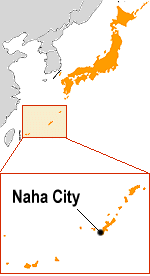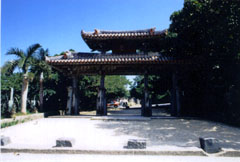

 |
||

|
Ruins of Castle with Strong Chinese Influence,
Unique to Okinawa
 Shuri Castle, whose ruins remain in Naha City of Okinawa Prefecture, is said to date back to the 12th century or earlier. After several hundred years of rivalry between warlords, Okinawa islands were unified as the Ryukyu Kingdom in the early 15th century. For 450 years thereafter, Shuri castle had been the palace of the King of Ryukyu. Being an independent kingdom situated between Japan and China, Okinawa, then Ryukyu, Shuri Castle developed in an architectural style different from that of castles in mainland Japan. Reflecting Okinawa's active exchange with China in the 14th century, Chinese influence can be seen in the construction techniques of the castle. From the 18th century when the region came to have relationships with Japan, Korea, and other neighboring countries, some buildings were built reflecting the architectural styles of these countries. The castle boasted a 60,000-square meter (71,754-square yard) compound at the peak of its prosperity. Just before the Second World War, it still covered 46,000 square meters (55,011 square yards) with maximum axes of 400 meters (1,312 feet) from east to west and 270 meters (886 feet) from north to south. The castle complex at that time was surrounded by solid stone walls, and many national-treasure class buildings including the symbolic Seiden (main pavilion) and the Shurei-mon (the second gate) soared imposingly. During the war, however, not only those buildings but also the stone walls were completely demolished. Today, the Kankai-mon (the main gate), the Shurei-mon, the Seiden, and other buildings have been restored to their original state, and the site has been made into a historical park.  The Shurei-mon is best known as an architectural structure unique to Okinawa and is sometimes referred to as a symbol of Okinawa. The gate is the second one along the route up to the castle, while the first and main gate stood lower, having the same shape and size as the Shurei-mon: The two gates also used to be called "Ue no Torii" (the upper gate) and "Shita no Torii" (the lower gate) respectively. Photos: (From top) Seiden (main pavilion) of Shuri Castle; Shurei-mon. (Okinawa Convention and Visitors Bureau) Unauthorized reproduction of the
photos in this page is prohibited.
Related Links: |
|

